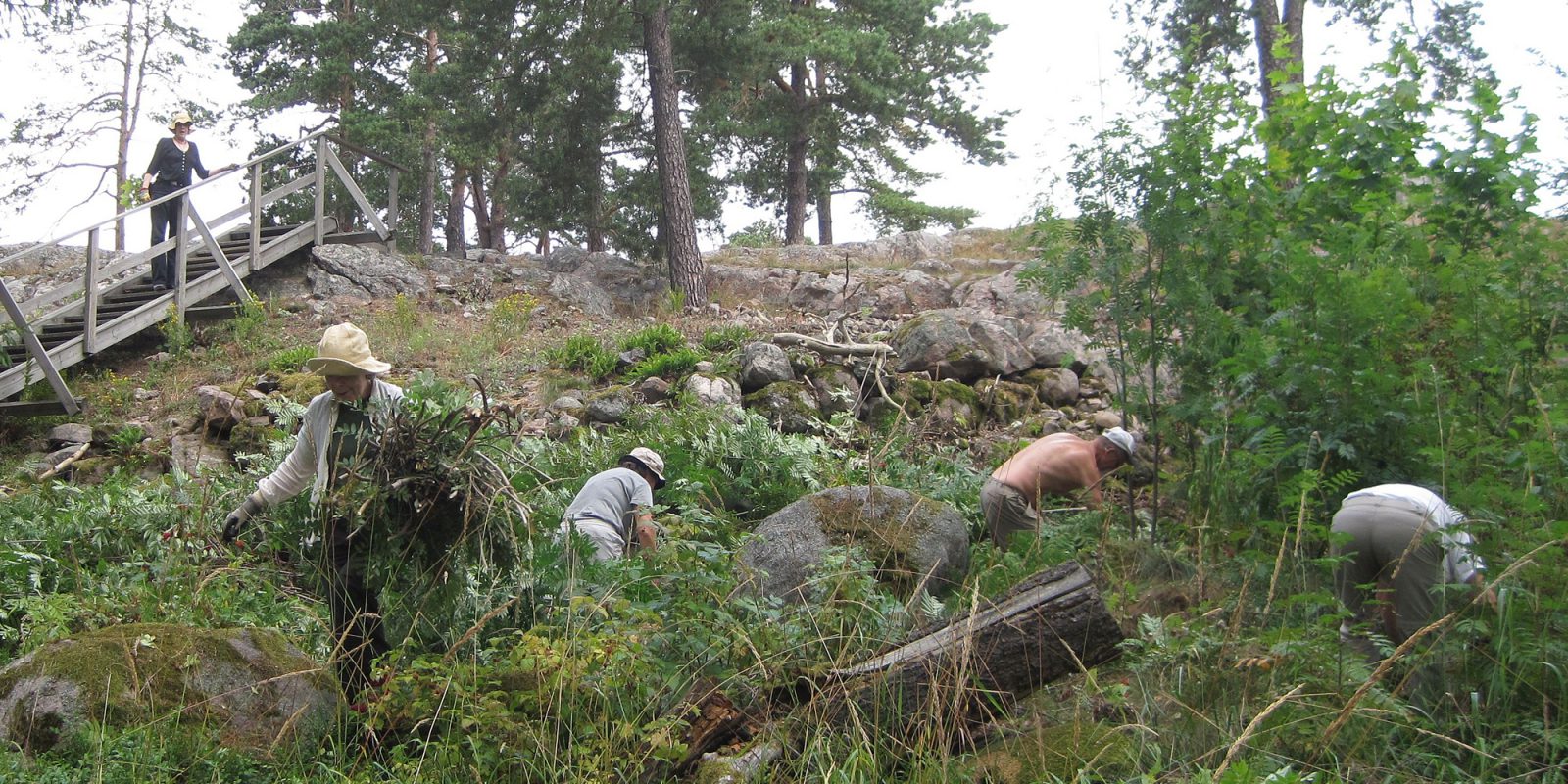
Maintaining the archaeological cultural heritage
The maintenance of the archaeological cultural heritage refers to the landscape maintenance of a stationary relic or other archaeological entity and its surroundings. The primary goal of the maintenance work is to protect archaeological cultural heritage and increase an entity’s visibility in its current surroundings.
The landscapes surrounding us are constantly changing. Preserving ancient relics as the oldest stratum in our cultural landscape makes the past part of our everyday lives. Well-maintained and marked relic sites equipped with signs expand the temporal dimension of our living environment and improve its atmosphere.
The Finnish Heritage Agency provides guidance and advice and monitors the landscape maintenance and marking of ancient relics together with the provincial museums.
The aim is to extend the landscape maintenance measures to cover areas that form a natural whole, which will enable better attention to be paid to the various strata and time periods of the landscape. This means that landscape maintenance is not intended to stop the development of a specific area at a certain level, and therefore achieving an ancient-looking scenery is also not the goal. When planning maintenance work, the relic site must be observed as a whole, with the terrain, the relic with its structures and the area’s vegetation steering the practical work.
The maintenance of the archaeological cultural heritage is primarily governed by the Antiquities Act (295/1963). The European Landscape Convention, which Finland signed in 2006, has proved to be an excellent tool and means of support. The Landscape Convention is the first international agreement to concern solely landscapes. This convention takes into account the differences of landscape types and highlights their importance for social well-being, ecology and tourism, among other things. The convention emphasises cooperation between the authorities and the regional/local operators, which has been shown to be of a particular importance when planning the maintenance and utilisation of archaeological cultural heritage.
Maintenance planning and implementation
A maintenance plan will be drawn up for every target site, factoring in the reasons for the maintenance, the future utilisation goals and requirements, as well as the actual maintenance instructions. The main focus in the maintenance of archaeological cultural heritage should be on both the traces and structures created by human activity as well as the relic’s natural environment.
The most important natural values in a relic site include the biotopes resulting from human activities. The aim is to revive or highlight the landscape features developed over time.
The archaeological site selection for maintenance might be self-evident. Perhaps there is only one site nearby that is to be maintained. Often, however, the maintenance target must be chosen from among many possible options. Several factors affect the selection. The relic might be significant due to its appearance or location, or it might have an important status in the history of archaeological research. Maintained ancient relics and cultural heritage entities function as diverse visiting destinations that can be utilised for teaching, tourism and recreational purposes. Ancient relics are unique and invaluable. Therefore their protection and preservation take priority when planning the entity’s use. The most important thing affecting the final decision is the available resources. The required resources must be in balance with the maintenance plan goals.
Links:
The Ancient Relics Register (in Finnish)
The Cultural environment register portal (in Finnish)
Arkeologisen kulttuuriperinnön opas (‘Guide to archaeological cultural heritage’, in Finnish):